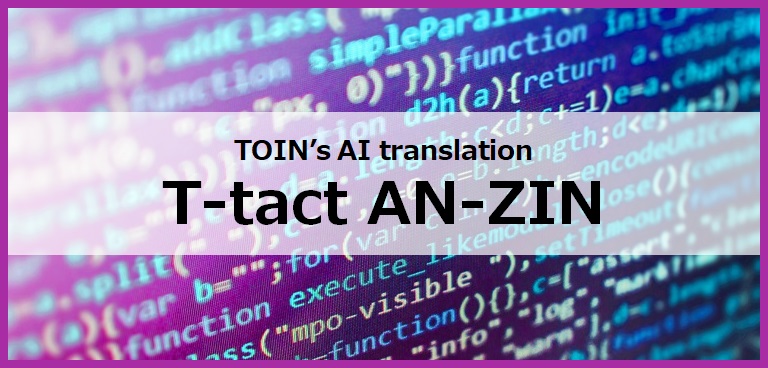AI Translation and Post-Editing Make Overseas Marketing Easily Attainable

In recent years, an increasing number of companies have been conducting marketing in overseas markets. With the advancements in translation tools today, the language barrier is gradually becoming less of an obstacle. However, in order to succeed in international markets, employing the same marketing strategies as those used in Japan is often insufficient. It is true to say that, without successful overseas marketing, it will also be difficult to expand internationally.
This article explores the differences between overseas marketing and domestic marketing, as well as discuss how to successfully implement overseas marketing with ease through AI translation and post-editing.
What is Overseas Marketing?
Overseas marketing is an approach toward marketing activities that targets countries or regions outside of Japan. Whether it is a BtoB or a BtoC context, it involves developing strategies to create a system that facilitates the sale of products and services in the targeted country or region.
With the growth of the internet and an increasing number of users in recent years, there has been an increasing trend of companies engaging in overseas marketing through online channels. Notable examples of this include social media marketing, video marketing, and search engine marketing (including SEO and listing advertisement). Recently, a hybrid approach known as OMO (Online Merges with Offline) marketing has begun to be utilized, which integrates both online and offline (physical store) experiences.
In other words, overseas marketing refers to the implementation of marketing strategies tailored to local markets outside of Japan, conducted either online or offline.
What are the Differences between Overseas Marketing and Domestic Marketing?
One of the key characteristics of overseas marketing is the difference in language. Next, there are also variations in customers’ cultures, customs, and preferences in the target regions. Furthermore, trends in the local market, the advertising methods used, and the definition of target customers may differ from those in Japan. Furthermore, the types of media or platforms frequently used, such as social media, may differ significantly from those targeted at the Japanese market. Aspects such as listing advertisements and SEO strategies may also differ.
Additionally, differences in appeal points and storytelling, as well as background music, etc., have enhanced the persuasive effects of strategies that respond to the needs of the target region.
In overseas marketing, it is essential to develop strategies that are optimized for the local market, which differs from those intended for the Japanese domestic market. By adapting marketing methods to suit local cultures and values, it becomes easier to foster empathy, thereby drawing closer to the success of international marketing initiatives.
Overseas Marketing Strategies: Three Key Points to Success
In overseas marketing, the following three points are crucial.
・Market research
・Marketing strategy design
・Promotional advertising
It is essential to understand the local market and to design marketing strategies that are tailored to the local area, utilizing culturally appropriate messaging and videos for advertising and promotion.
To conduct the first point, market research, you can obtain statistical data from sources such as JETRO (Japan External Trade Organization), IMF DataMapper, the World Bank, etc.
For the second point, designing a marketing strategy, it is good to base your strategy on the data gathered from the market research, targeting your specific customer audience.
And with regard to the third point, promotional advertising, you will need to either create a new version from scratch in the foreign language or translate the Japanese version if it is available. Although the most common translation language is English, depending on the region you may choose a language spoken in that region, such as Chinese or Spanish. There are two ways to perform translations: either ask a translation company to perform the translation, or use machine translation and then revise the translation results.
Easily Achieve Overseas Marketing through Machine Translation and Post-Editing
In today's business environment, particularly in overseas marketing, speed has become a vital factor. To avoid missing out on business opportunities, employing machine translation can be an optimal solution for swift and convenient translations. However, if you are hesitant to utilize machine translation due to concerns about accuracy, the best approach is to post-edit the results of the machine translation.
Post-editing is the process of reviewing and revising machine-translated text to ensure it is clear and contextually appropriate. By utilizing high-quality machine translation, such as AI translation, it is possible to achieve rapid translations, which are then carefully checked and refined by human editors. This method allows customers to leverage the strengths of both technology and human expertise.
Since machine translation is used to complete the translation quickly, the turnaround time can be shortened depending on the accuracy of post-editing, making it well-suited for overseas marketing, where speed is essential.
TOIN’s Post-Editing Services
TOIN’s skilled post-editors are equipped with advanced translation techniques and expertise to swiftly optimize machine-generated translations to enhance our customers' global marketing efforts.
TOIN offers both high-quality full post-editing services based on the ISO 18587 international standard for post-editing and, for urgent requests, it also provides light post-editing services with expedited delivery within a shorter timeframe.
If you are looking for post-editing services, please contact TOIN, a provider of high-quality translations.
Summary
TOIN provides comprehensive translation services, including document and video translation and post-editing, offered by professional translators with a long-standing history in the industry. For inquiries about AI machine translation tools and translation services, or translation in general, feel free to consult with us at TOIN.
Click here for information about post-editing:

Click here for more information about TOIN's AI translation service, T-tact AN-ZIN®:

▶About the Author
TOIN Corporation Marketing Department
Hiromi Ishikawa
Joined TOIN Corporation in 1990 and was engaged in the production of manuals. Her wide range of duties include everything from transcribing Japanese manuscripts to directing the production of multilingual manuals.
From 2002, her main focus has been on localization project management, and she has been responsible for facilitating many of the company's major projects. Since 2009, she has been working in the Marketing Department, where she has been involved in marketing as well as advertising and public relations activities. She has been a member of the Board of Directors of the Japan Translation Federation and the Asia-Pacific Machine Translation Association since 2018.









